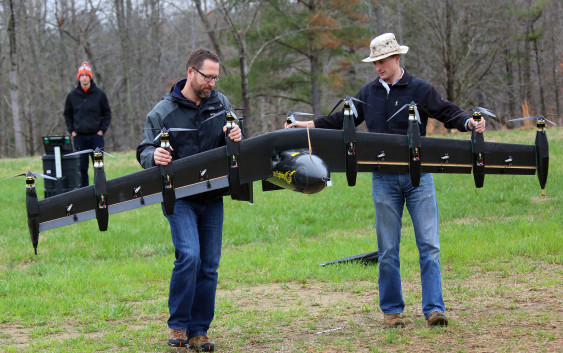The Prototype 10 engine Electric drone Greased Lightning ( GL-10) has both hover and plane mode.
The prototype drone from NASA is currently in its testing stage, with the ability to take off vertically the drone has passed its hovering tests with flying colours, but the next stage is the transition from vertical to forward “wing-borne” flight. As engineers who have designed full-scale vertical take off and landing tiltrotors such as the V-22 Osprey will tell you — that is no easy task because of the challenging flight aerodynamics.
“It could be used for small package delivery or vertical take off and landing, long endurance surveillance for agriculture, mapping and other applications. A scaled up version — much larger than what we are testing now — would make also a great one to four person size personal air vehicle.”
“We built 12 prototypes, starting with simple five-pound (2.3 kilograms) foam models and then 25-pound (11.3 kilograms), highly modified fiberglass hobby airplane kits all leading up to the 55-pound (24.9 kilograms), high quality, carbon fiber GL-10 built in our model shop by expert technicians, ” said aerospace engineer David North.
The next step in the GL-10 test program is to try to confirm its aerodynamic efficiency, but first is a stop at the Association for Unmanned Vehicles Systems International 2015 conference in Atlanta May 4-7. The GL-10 will be the centerpiece of an exhibit showcasing some of NASA Langley’s UAV research.
Part of that UAV research is for NASA Aeronautics’ Unmanned Aircraft Systems Integration in the National Airspace System Project, led out of the Armstrong Flight Research Center in Edwards, California. Engineers from Armstrong will highlight project accomplishments and upcoming work in a booth in Atlanta. The goal of the project is to provide research results to reduce the technical barriers associated with integrating unmanned aerial vehicles into the skies.



